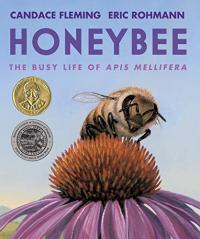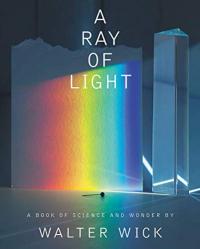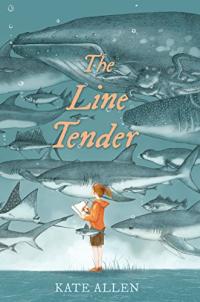
Holly loves doing experiments and learning new things in science class! But when she finds out the next experiment is making slime, she’s worried. Slime is made with glue, and glue is sticky. Holly has sensory issues because of her autism and doesn’t like anything sticky! With help from family and her teacher, Holly receives the accommodations and encouragement she needs to give slime a try.
Too Sticky! Sensory Issues with Autism

They communicate, play, use tools, and sometimes even fight. Find out how different animals behave in this well-organized, engaging, and educational look at animal behavior. Illustrations complement the accessible text on each double-page spread. A glossary and additional resources are included.
Surprising Lives of Animals: How They Can Laugh, Play and Misbehave!

From the Atmosdragon to the Oblivionped, the Earth is in grave danger. Science and folkloric creature are creatively integrated in this call to action. Attractive and accessible, “monster cards” add a game-like quality as well as a way to compare impact. Source notes and index are included.
Planet SOS

Lots of things happen all over the world every day. Have you ever considered what one small second of time can hold? What would happen in a minute? An hour? Colorful, bold graphic illustrations punctuate the statistics cited with sources noted at the end. The eye-popping numbers and images are sure to ignite wonder if not curiosity.
Every Second: 100 Lightning Strikes, 8,000 Scoops of Ice Cream, 200,000 Text Messages, 1 Million Gallons of Cow Burps … and Other Incredible Things That Happen Each Second Around the World

Apis Mellifera, the worker honeybee, does a lot during its short life. Poetic language and highly detailed illustrations provide an up-close look at the bee, its hive, and expansive travels, cleverly seen in a double gatefold. Backmatter and further reading conclude this stunning book.
Honeybee: The Busy Life of Apis Mellifera

Former children’s poet laureate, J. Patrick Lewis, allows the polar bear tell us what he’s called in different cultures — White Bear, Ice Bear, Sea Bear, Sailor of the Icebergs, the Ever-wandering One. The Inuit’s say “I am Nanuk”). The devastating ending shows the polar bear adrift on a shrinking bit of ice, “losing hold” — a reference to how this Arctic animal is threatened by extinction and in need of human protection.
I Am Polar Bear

Look! A line of paw prints in the snow. Follow the tracks to see the rare and majestic snow leopard and visit her secret world. Join a zoologist in the Himalayan mountains as he searches for the elusive creature. With her pale gold and silver-gray coat painted with black rosettes, she blends so well into the boulders, it’s no wonder she’s thought of as a ghost of the mountains. Written by a zoologist and interwoven with fascinating facts, this look at a fascinating animal includes an end note suggesting resources to explore.
Snow Leopard: Ghost of the Mountains

“Help! I’m melting!” A boy rescues a snowball again and again in this funny story about a snowball that gets to see all four seasons. Back matter offers information about the seasons and the three states of water (solid, liquid, and vapor)
The Luckiest Snowball

Matter can be liquid, sold, or gas that can have a role in its [light’s] creation. In large, luminous, light-filled photographs and understandable text, explore various aspects of light from incandescence to the color spectrum, iridescence, and more. Additional information about topics concludes this inspiring and informative overview to light.
A Ray of Light

A meteorologist tries to enlighten the handsome but clueless anchorman about weather, weather forecasting, and climate. The comic book format presents complex information about climate change, balancing it with just the right amount of humor. Advice to prepare for emergency preparedness and a glossary are included. Transportation and car enthusiasts will enjoy Science Comics: Cars Engines that Move You (opens in a new window) by Dan Zettwoch.
Science Comics: Wild Weather: Storms, Meteorology, and Climate

How do we know something that is invisible is really all around? With our noses! Human “noses can detect more than 400,000 different smells.” Animals use their noses for different reasons; dogs smell marked territory, great white sharks detect prey. Sometimes humorous illustrations and flaps that lift reveal a bundle of information sure to inspire further inquiry.
Nose Knows: Wild Ways Animals Smell the World

There is great drama to be found on the Serengeti witnessed by scientists. Meet some of those who study the migration of wildebeest in Tanzania. Observe the animals that share the land with the wildebeest. The author’s insightful, illuminating, and highly readable narration in a handsome format with stunning photographs is also a plea for humankind to respect other mammals.
The Magnificent Migration: On Safari with Africa’s Last Great Herds

Twelve-year-old Lucy lives with her father in Rockport, Massachusetts. Her mother, a marine biologist, died several years earlier. Lucy and her best friend and neighbor with a passion for science are making a field guide about marine animals: Fred writes; Lucy draws. Loss, grief, and healing are deftly handled in this memorable, striking novel in which community, art, science, and love intersect.
The Line Tender

From farming to feelings, from teamwork to community, “…it turns out that the respect for animals that is so important in indigenous traditions makes very good sense.” In other words, humans and animals share a great deal, making all creatures “humanimals” — a case presented in clear illustration and straightforward text. The scientists who study animals and their behavior are included, as are additional resources.
Humanimal: Incredible Ways Animals Are Just Like Us

Never heard of the black and rufous sengi? How about Brainville’s beaked whale? Lions, and tigers and giraffes are all familiar, but in this humorously illustrated and informative volume you’ll find out about even more less-well-known animals. As in the first book in the series, Lesser Spotted Animals (opens in a new window), readers meet unfamiliar animals, where they are found, what they eat, and if they are thriving. After all, “how can we help something survive if we don’t even know it exists?”
Even More Lesser Spotted Animals

The story of steamships and transatlantic travel is intertwined with Macaulay’s personal story of leaving the United Kingdom for America in 1957. Sophisticated readers will appreciate the detailed narrative describing the evolution of ocean voyages though the richly detailed illustrations are likely to have broader appeal. Photographs (including a young David) and an afterword are included.
Crossing on Time : Steam Engines, Fast Ships, and a Journey to the New World

Who said that there isn’t fact in fun? They haven’t met the heroes in this highly, hysterically illustrated space adventure. AlphaWolf, SmartHawk, LaserShark, and StinkBug explore the universe in their Thomas Jefferson Nose Rocket looking for a Goldilocks planet but find danger instead. Earth, the narrator, also provides information about climate change in this wild and witty adventure.
AstroNuts Mission One: The Plant Planet

Although not likely, if one ever finds themselves stuck in quicksand, this is the book you need! Two children, one stuck in the muck, receives information about quicksand and how to respond if caught. Tomie dePaola’s signature illustrations are as witty and appealing as when the book first appeared in 1977.
The Quicksand Book

For his 8th birthday, young Mario Molina got a microscope, which launched a career in science. His interest in chemistry led to a doctorate and work on the atmosphere. In an epilogue by Mario, the Mexican-born chemist declares he has now taken on global warming. Additional back matter adds even greater interest in this accessible and appealing biography. The book is also available in Spanish: Mario y el agujero en el cielo: Cómo un químico salvó nuestro planeta (opens in a new window).
Mario and the Hole in the Sky: How a Chemist Saved our Planet

From rocks to coral reefs, animals and insects can be difficult to see. Why? Because camouflage provides protection. Camouflaged animals are described in specific environments; turn the page and the same animal is shown without camouflage with recognizable size comparisons. Additional information concludes the handsomely illustrated and informative volume.
Look Again: Secrets of Animal Camouflage

Dinosaurs lived during three eras: Triassic, Jurassic, and Cretaceous. Find out what’s in a paleontologist’s toolkit then join a dig site for each period. Double-page gatefolds open to reveal which dinosaurs once lived at the dig site. Additional information and a quiz complete this realistically illustrated introduction for budding scientists.
In Search of Dinosaurs: Find the Fossils: Identify the Dinosaurs

Three high-energy children and their dog begin a hike in the woods by running. They stop along the way to enjoy thimbleberries, observe a deer, and more. One of the girls keeps a journal of things she’s observed. Wren’s journal is shown after the three children return home as the sun sets. Simple illustrations convey they joy of an outdoor hike and what the kids have seen along the way.
The Hike

When you can’t stop moving, we say you have “ants in your pants.” That’s because ants always are moving! Fascinating facts are presented in a generously illustrated, humorous but factual format — including what ants eat and what eats ants. This is a worthy addition to the author’s fascinating and accessible series.
Ants Don’t Wear Pants

Explore nature from tiny seeds to ocean life, from worlds hidden underground to a frosted earth. Brief, lyrical text is illustrated on the opposite side of the open book which then folds out to provide additional illustrations and information about the scene. Colorful, stylized illustrations and die cuts add interest to each informative double-page spread.
